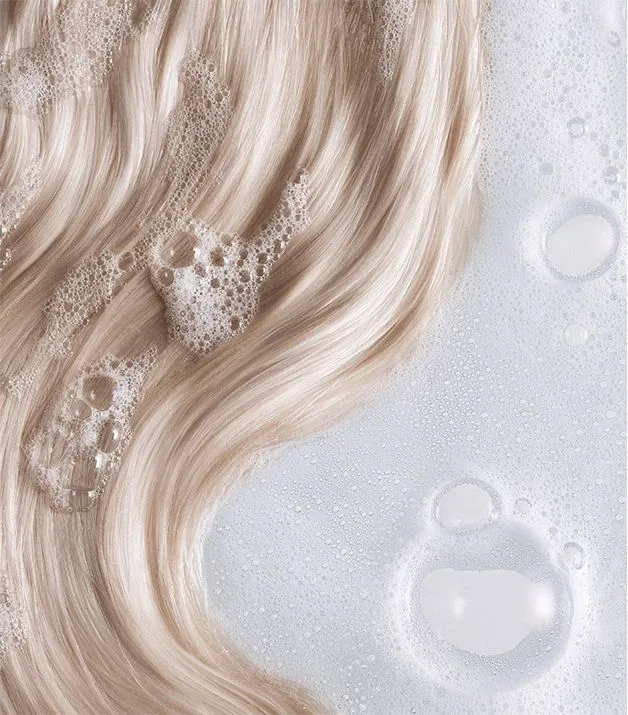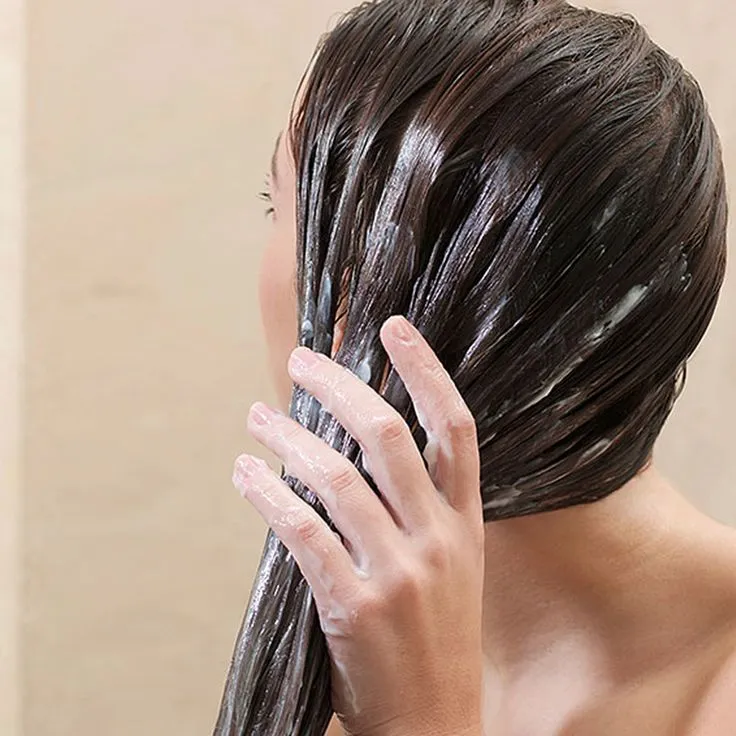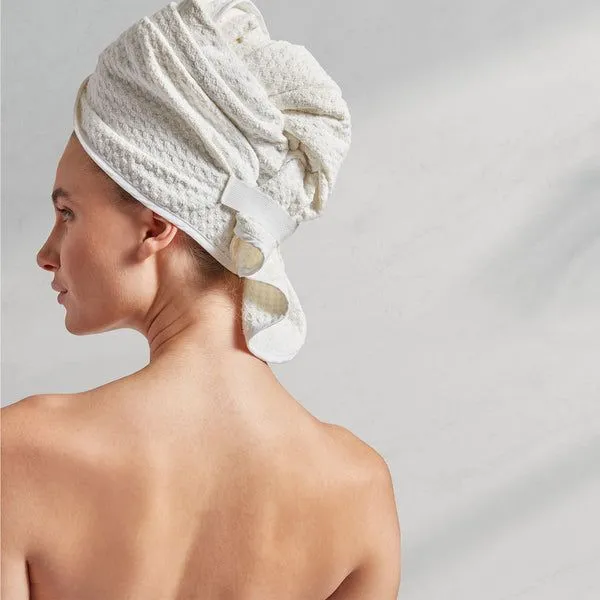
Human hair extensions are a fantastic investment for adding length, volume, and versatility to your natural hair. However, learning how to wash hair extensions properly is crucial—incorrect techniques can lead to tangling, shedding, and premature damage. Whether you have Tape-in Hair Extensions, Pre-bonded Hair Extensions, Sew-in Hair Extensions, Clip-in Hair Extensions or Wire Hair Extensions, this guide will walk you through the best methods to cleanse and maintain them for lasting softness and shine.
Understanding Your Extension Type
Before learning how to wash hair extensions, identify your type, as each requires slight adjustments in care:
1.Tape-InHair Extensions: Most vulnerable during washing. Avoid excessive rubbing directly on the tapes. Focus on gentle swishing.
2.Pre-bonded Hair Extensions: Beads can trap water. Thorough rinsing and careful drying around beads is essential. Avoid pulling strands near the bead.
3.Sew-In / Weft Extensions: The weft (top seam) is a tangling point. Take extra care detangling near the weft.
4.Clip-In Hair Extensions/Wire Hair Extensions: Easiest to wash as they are removed. Still require gentle handling to preserve the clips and prevent tangling.
How to Wash Hair Extensions: Step-by-Step Guide
1.Detangle Before Washing

1.Use the Right Tools: A high-quality, seamless wide-tooth comb or an extension-specific brush (like a soft boar bristle brush or loop brush) is essential. Never use fine-tooth combs or regular brushes.
2.Start at the BOTTOM: Hold the hair just above the very ends. Gently comb out the bottom 1-2 inches. Never start detangling from the top or roots!
3.Work Upwards Slowly: Once ends are smooth, move your grip up a few inches and detangle the next section, working methodically towards the bonds/attachment points.
4.Handle Bonds Gently: When you reach the attachment area (tapes, beads, weft), be extra cautious. Hold the bond/bead itself firmly with one hand to prevent tugging on your natural hair or stressing the attachment. Use your other hand to gently comb the extension hair below the bond, starting a few inches down and moving towards the bond. Avoid combing directly on the bond/tape/bead.
5.Use Detangling Spray (Optional but Recommended): Lightly spritz a water-based, alcohol-free detangling spray or a leave-in conditioner spray on the mid-lengths and ends if you encounter resistance. Avoid soaking the bonds.
2.Use the Right Products
1.Sulfate-Free Shampoo: Non-negotiable. Sulfates are harsh detergents that strip moisture, fade color (if dyed), and can break down tape adhesives and keratin bonds over time. Use a gentle, moisturizing sulfate-free shampoo.
2.Moisturizing Conditioner: Extensions need extra hydration as they don’t get scalp oils. Use a rich, sulfate-free conditioner. Avoid heavy silicones that cause buildup (look for water-soluble silicones like Dimethicone Copolyol or avoid them).
3.Clarifying Shampoo (Occasional): Use only once every 4-6 weeks if needed to remove stubborn product buildup. Ensure it’s sulfate-free and bond-safe. Rinse extremely thoroughly.
4.Leave-In Conditioner/Detangler (Recommended): Essential for post-wash moisture and manageability. Choose lightweight formulas.
Tips:For bonded hair extensions, avoid shampoos with oils near the bonds as they can loosen adhesive.
3.Water Temperature Matters
Lukewarm water is best—hot water damages bonds, cold water doesn’t cleanse well.Microbeads Hair Extensions are especially sensitive to heat – always use lukewarm water to prevent bead loosening.
4. Washing Technique
1.Wet Thoroughly: Saturate your hair and extensions completely with lukewarm water under a gentle shower stream. Avoid strong jets directly on bonds.
2.Apply Shampoo: Dispense a quarter-sized amount of sulfate-free shampoo into your palm. Rub hands together, then apply only to your scalp and the roots of your natural hair. Do not pile hair on top of your head!
3.Cleanse Scalp: Using your fingertips (not nails), gently massage your scalp in circular motions. Let the shampoo suds run down through the extensions. This is usually sufficient to cleanse the extension hair itself.

4.Cleaning Extensions (If Needed): If extensions feel particularly dirty, apply a tiny amount of diluted shampoo (mix with water in your palm) to the mid-lengths and ends. Never apply concentrated shampoo directly to the lengths, especially near bonds.
5.The “Swish” Method: The safest way to cleanse extensions is to let the water flow through them while you gently swish them back and forth with your hands, like seaweed in water. Avoid rubbing, scrunching, or piling hair.
6.Avoid Bond Friction: Be mindful not to aggressively rub extension strands against each other directly over the bonds/tapes.
7.Rinse Extensively: Rinse under lukewarm water for at least twice as long as you think necessary. Shampoo residue is a major cause of tangling and dullness. Ensure water runs completely clear, especially near bonds/beads where residue can hide.
5. Conditioning (Focus on Ends)
1.Rinse thoroughly with cool water: Cool water helps seal the hair cuticle, enhancing shine and reducing frizz.
2.Ensure No Residue: Check carefully, especially around beads and the tops of wefts, that all conditioner is rinsed out. Residue attracts dirt and causes tangling.
How to Dry Hair Extensions
1.Remove Excess Water:
1.Gently squeeze hair and extensions from the mid-lengths down to the ends with your hands. Never wring, twist, or rub vigorously!

2.Wrap hair in a clean, absorbent microfiber towel. Microfiber is gentler and causes less friction than terry cloth, reducing frizz and tangling. Turban style is fine. Avoid vigorous rubbing.
2.Detangle Again
1.After 5-10 minutes in the towel, remove it. Hair should be damp, not dripping.
2.Apply Leave-In Conditioner/Detangler: Liberally spray a lightweight leave-in conditioner or detangler onto the mid-lengths and ends.
3.Detangle with Extreme Care: Using your wide-tooth comb, start at the ends and work up, just as you did when dry. Hold bonds firmly. This is the safest time to detangle.
3.Dry Methods
Air Drying (Highly Recommended):
1.Gently comb hair into place.
1.Let it hang freely or loosely braid it (single braid or pigtails) to prevent tangling while drying. Do not secure braids tightly near bonds.
1.Ensure hair is completely dry before sleeping or styling, especially bonds/tapes/beads. Trapped moisture breeds bacteria and weakens bonds.
Blow Drying (Use with Caution):
1.Apply Heat Protectant: Mandatory! Spray evenly on mid-lengths and ends.
2.Low/Medium Heat & Speed: Use the lowest effective settings. High heat damages extensions faster than bio hair.
3.Focus on Roots & Bonds First: Dry your scalp and the attachment areas thoroughly first to prevent moisture retention near bonds. Hold the dryer nozzle pointing down the hair shaft.
4.Avoid Direct Heat on Bonds: Don’t concentrate heat directly on tapes or beads for prolonged periods. Keep the dryer moving.
Troubleshooting Washing Issues with Extensions
1.Tangling/Mating: Usually caused by washing before detangling, rough washing/rubbing, insufficient rinsing (residue), or sleeping without protection. Saturate with conditioner/detangler and patiently work out knots from the bottom up. Severe mats may require professional help.
2.Shedding: Some shedding is normal. Excessive shedding can indicate poor-quality hair, damaged bonds from incorrect washing/drying, or over-processing. Handle gently, especially when wet.
3.Dryness/Frizz: Increase conditioning (mid-lengths to ends), use leave-in products, deep condition occasionally, reduce heat styling, use cool water rinse. Silicone-free serums can help tame frizz.
4.Bond/Tape Issues (Slipping, Residue): Avoid conditioner/oils near bonds. Clean tape residue gently with extension-safe adhesive remover or rubbing alcohol on a cotton swab (test first!). See your stylist for significant bond problems.
Now that you know how to wash hair extensions, consistency is key. Gentle care, proper products, and correct drying will keep your extensions looking flawless for months. But washing is just one part of the equation—proper daily maintenance ensures long-lasting beauty.
For a complete guide on keeping your extensions in perfect condition, check out our article on how to care for hair extensions, where we cover brushing techniques, heat styling tips, nighttime routines, and more. Follow these steps, and your extensions will stay soft, shiny, and tangle-free for their full lifespan!
